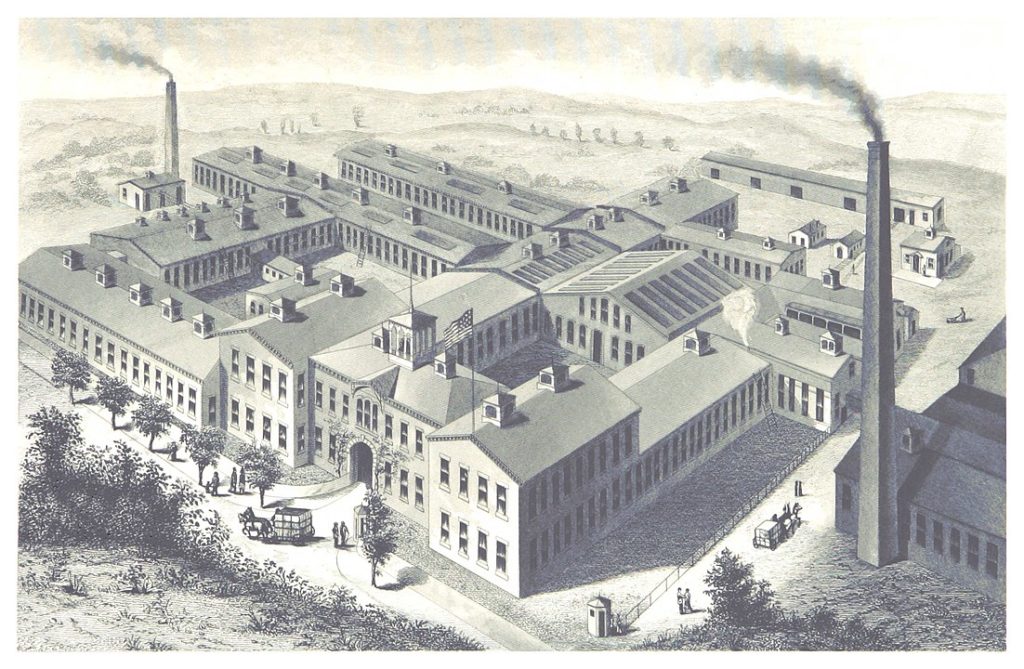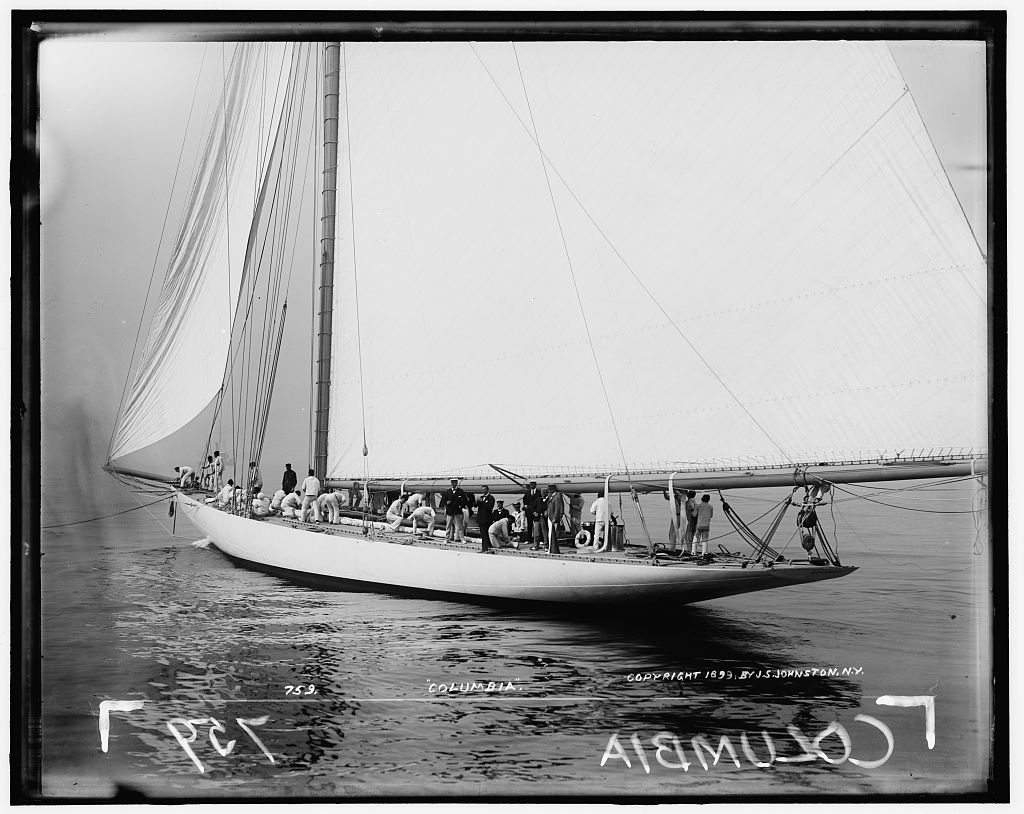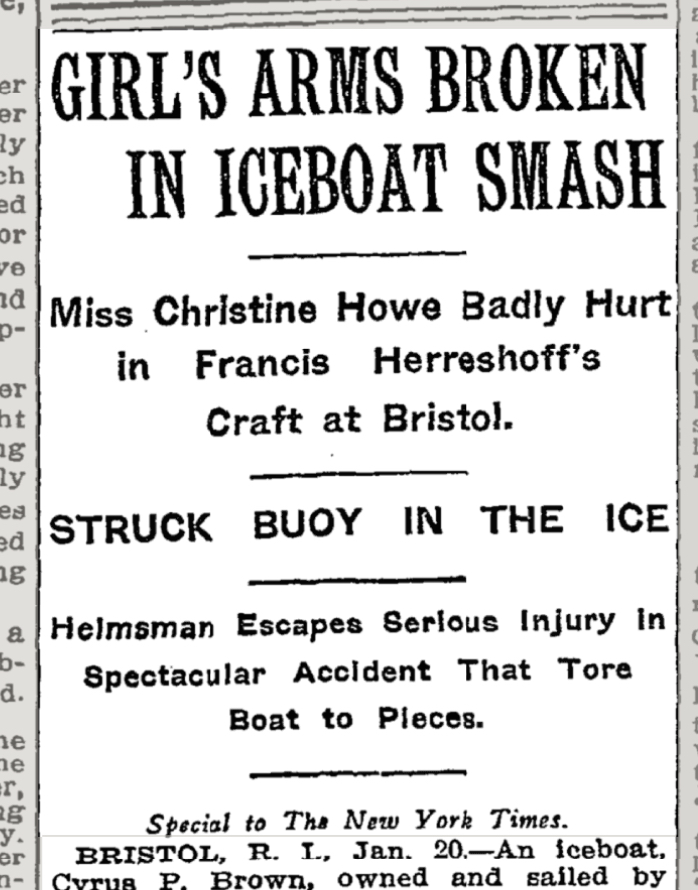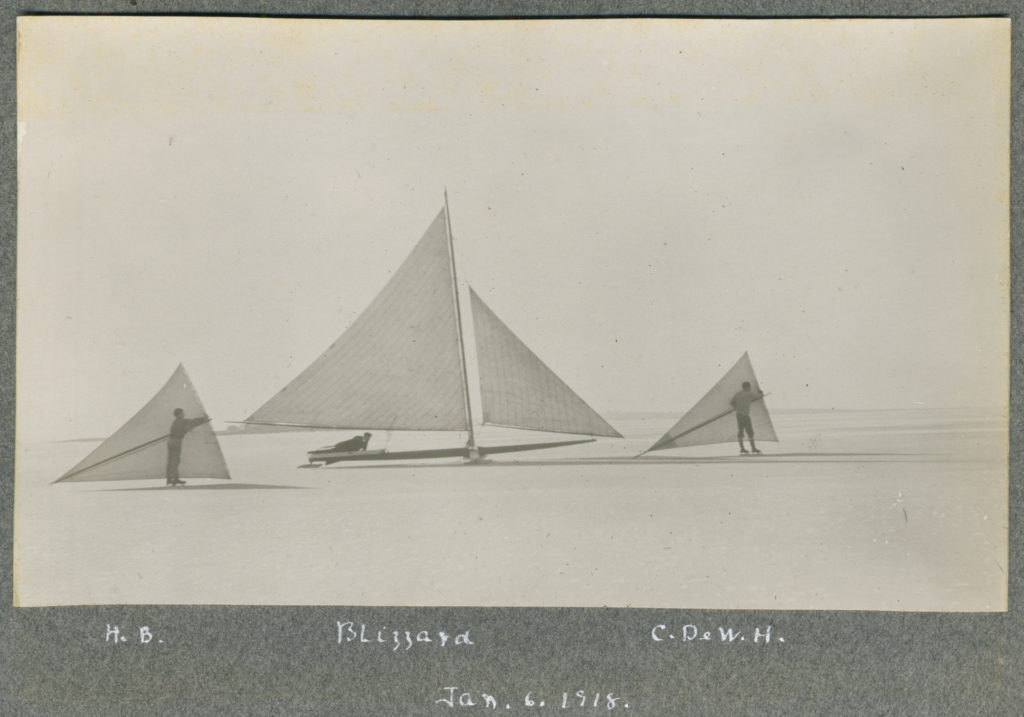January 28, 2021
This Week in Herreshoff History: January 28
Bristol industrialists and neighboring mansions, the launch of a sea-going torpedo boat, gossip from the only reliable source, and an unfortunate iceboating accident

January 28, 1888
"The Herreshoff Works are crowded with contracts" this January, according to the Bristol Phoenix. This is reported in a letter to the editor in counterpoint to the recent "failure of the National Rubber Company," another major industrial concern in the town of Bristol. Augustus Osborn Bourn, 36th governor of Rhode Island and owner of the National Rubber Company in Bristol, also owned the gothic stone mansion across the street from Love Rocks. The mansion, known as Seven Oaks, was designed by architect James Renwick Jr. and built in 1873.

January 23, 1890
The torpedo boat CUSHING (HMCo. #152) was launched 131 years ago this week. The Bristol Phoenix reported on the launching festivities and the many Naval officers in attendance. "Kitty" Herreshoff christened the vessel, and the crowd "seemed to enjoy the occasion heartily." CUSHING (TB-1) was equipped with two Thornycroft boilers and two Herreshoff steam engines. The quadruple expansion, 5 cylinder engines were capable of producing 1050 h.p., and the vessel made 26 m.p.h. in her speed trials. CUSHING was originally contracted for $82,750, and met an unfortunate end in 1920 at just 30 years old: the vessel was used for target practice by the Navy, and was sunk intentionally. You can learn more about CUSHING in our Curator's Log post September 2018.

January 24, 1899
The Bristol Phoenix is unhappy about big city newspapers scooping their local America's Cup stories and insists that they are the only source of exclusive America's Cup gossip to be trusted! As such, the Phoenix reports that the lead for the keel of the latest defender is in the process of being poured: not yesterday or tomorrow but that very day, January 24, 1899. This would have been the keel for COLUMBIA (HMCo. #499).

January 23, 1912

A terrible accident has occurred on the harbor, according to the Bristol Phoenix and (with even more dramatic headlines) the New York Times. The previous Saturday, L. Francis had been out sailing his iceboat CYRUS P. BROWN with a guest, Miss Christine Howe, of Philadelphia. The iceboat was going some 40 m.p.h. around dusk when it reportedly hit a mooring buoy protruding from the ice. Miss Howe was badly injured, suffering cuts and bruises to her face and two broken arms. L. Francis, somewhat miraculously, was not seriously hurt. The iceboat itself was reportedly destroyed. According to the Phoenix, the CYRUS P. BROWN was capable of attaining speeds close to 60 m.p.h. The unfortunate accident was reported on widely, perhaps especially so because Miss Howe was a "society girl." Though her injuries were serious, the papers projected she would make a full recovery. Despite the tenor of the coverage of this "spectacular accident," the two young people were lucky to have been able to walk away from the wreck.

